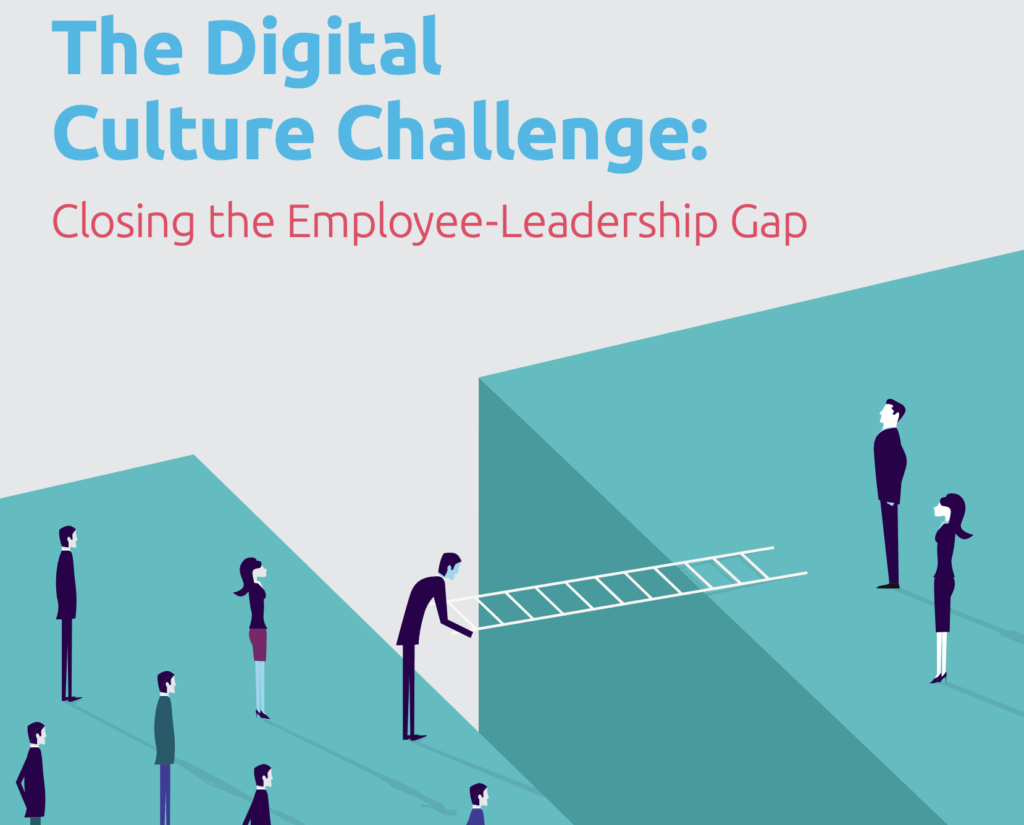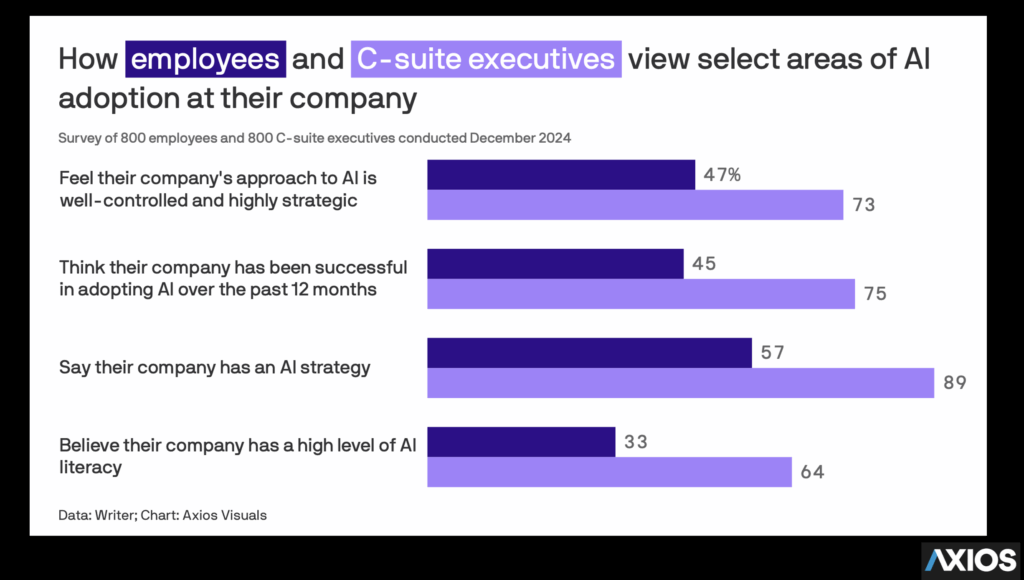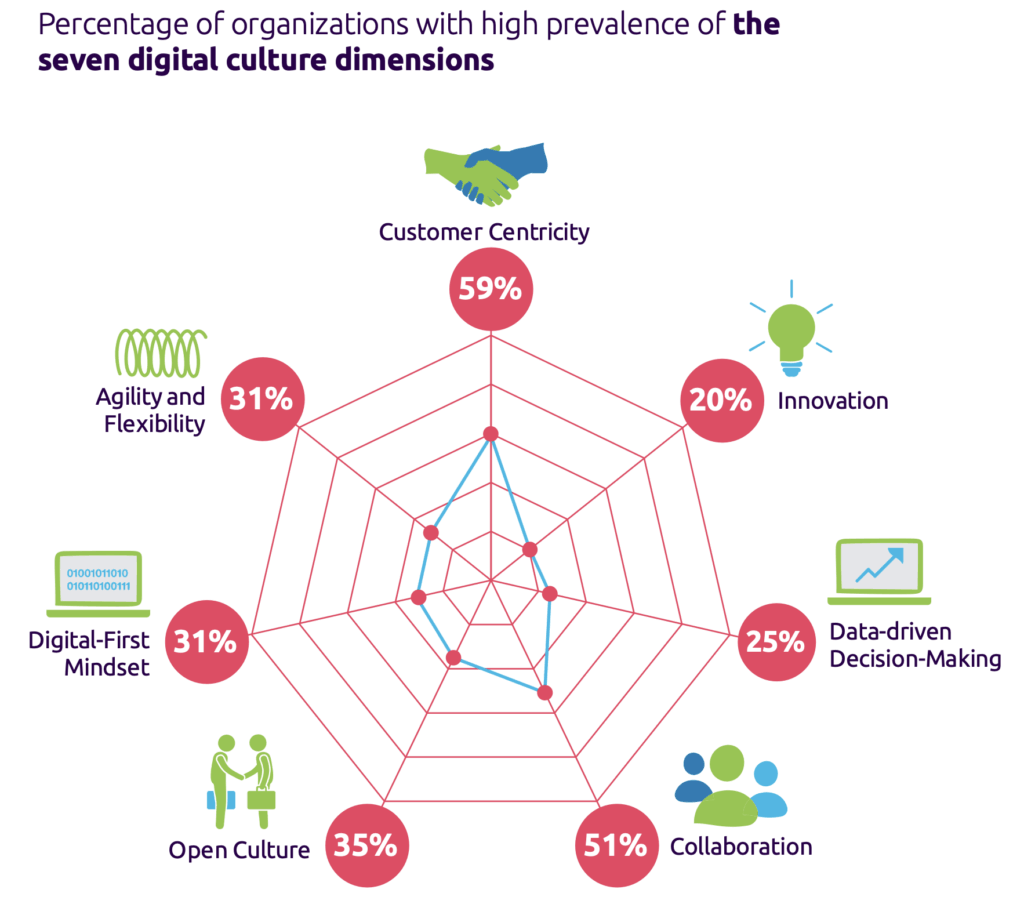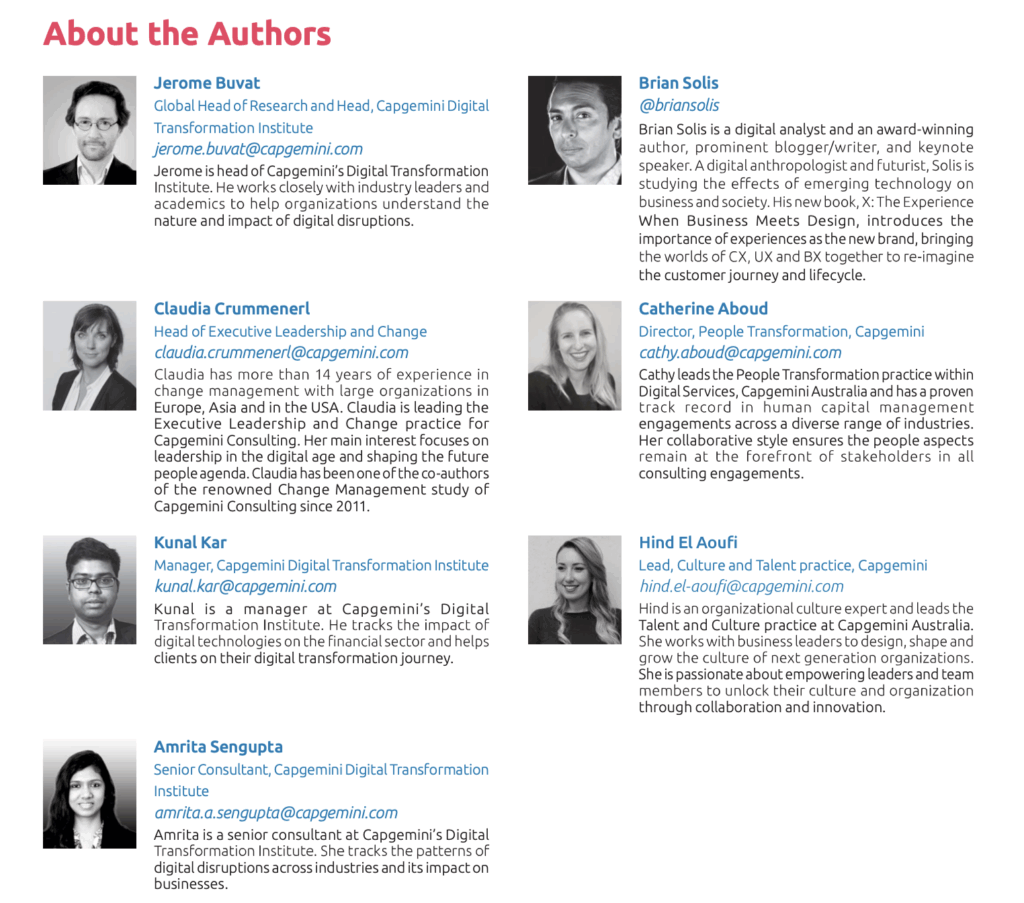
I would have forgotten all about this report I co-authored with Jerome Buvat of Capgemini in 2017 if I hadn’t received an email from Sara Fonseca from Insead. She’s working on research around the shaping of organizational cultures in the context of larger digital transformations. Her inquiry centered on our report that explored the expansive gaps between executives and employees around leadership, digital transformation, and culture, “The Digital Culture Challenge; Bridging the Employee-Leadership Disconnect.”
Her email inspired me to revisit the research, and wow, is it ever-relevant, especially in a time of AI. Feel free to sub the word ‘digital’ with ‘AI’ or ‘AI Ready’ and you’ll see that it’s pretty much the same…and…timely. In fact, I just wrote about the same type of gap for Forbes, “The AI Illusion: Why CEOs Must Confront The Gap Between Vision And Reality.”

The comprehensive research says that 62% of respondents see corporate culture as one of the biggest hurdles in the journey to becoming a digital organization. As a result, companies risk falling behind competition in today’s digital environment. Furthermore, the data shows that this challenge for organizations has worsened since 2011 by 7 percentage points, when Capgemini first began its research in this area.
The report is embedded below…
Employees don’t see their company’s culture as ‘digital’
The report, which includes more than 1,700 respondents in 340 organizations across eight countries, uncovers a significant perception gap between the senior leadership and employees on the existence of a digital culture within organizations. While 40% of senior-level executives believe their firms have a digital culture, only 27% of the employees surveyed agreed with this statement. The survey asked respondents to assess their companies’ digital culture based on seven attributes: their collaboration practices, innovation, open culture, digital-first mindset, agility and flexibility, customer centricity and a data-driven culture. Insights gathered from the report, and through a series of focus interviews, helped to identify some of the reasons behind this digital culture gap including senior leaders failing to communicate a clear digital vision to the company, the absence of digital role models and a lack of KPIs aligned to digital transformation goals.
Key report findings show that there is a profound disconnect between leadership and employees on all the dimensions of digital culture:
Innovation is still not a reality for many organizations. Only 7% of companies surveyed feel that their organization can test new ideas and deploy them quickly. This figure echoes employees’ sentiment about culture of innovation, with only 37% of respondents stating that their organizations have a culture of innovation, experimentation and risk-taking against 75% of senior executives. Organizations need to actively reward risk-taking and create an environment where employees can experiment.
There is strong disagreement on collaboration practices. The findings reveal a divide between senior-level executives and employees on collaboration practices. 85% of top executives believe that their organizations promote collaboration (or think AI empowerment or education) internally, while only 41% of employees agreed with this premise.
Leadership believes they have a digital vision, employees disagree. The research found considerable differences between what leadership and employees perceive as a clear digital vision. 62% of respondents in leadership positions affirmed they have a well-defined strategy to achieve their digital goals, while only 37% of employees agreed with this statement.
The report highlights that companies are failing to engage employees in the culture change journey. Getting employees involved is critical for shaping an effective digital culture and accelerating the cultural transformation of the organization. Leadership and the middle management are critical to translating the broader digital vision into tangible business outcomes and rewarding positive digital behaviors.

Digital culture leaders set themselves apart
The research identified a group of digital culture ‘front-runners’ (34% of organizations surveyed) who performed consistently well across the seven dimensions of digital culture and whose leadership has largely succeeded in aligning the wider organization to the desired culture. The UK, Sweden and the US have a strong representation of digital culture leader organizations (63%, 60% and 56% respectively), while automotive (43%), consumer products (38%), and telecoms (32%) have the highest proportion by industry sector.
These digital culture front-runners tend to hire differently than their digital slow-moving counterparts, consciously looking for behavioral traits such as creativity and autonomy when recruiting – 83% of front-runners compared to 29% of the digital slow moving counterparts; adjusting role descriptions and KPIs to align with overall digital transformation (75% compared to 17%) and aligning their compensation structure to digital transformation objectives (70% compared to 13%).
How to create a digital culture?
Creating a digital culture and affecting change requires patience, tenacity and constant vigilance. The report sets out some key elements needed for organizations to adopt a digital culture:
Deploy digital change agents and empower employees to drive a digital culture
Design new digital KPIs that focus on behaviors
Make digital culture change tangible
Invest in the digital skills that matter
Clearly communicate a digital vision and have visible leadership involvement
Use digital collaboration tools to increase transparency and to reach out to employees
Take a systems thinking approach to culture change
The Digital Culture Challenge; Bridging the Employee-Leadership Disconnect Research Methodology
This research provides insights on the challenges organizations face to build a digital culture. The report covers the views of 1,700 respondents from 340 organizations who participated in the survey. Participants included 20 per cent of senior executives, 40 per cent middle management respondents and 40 per cent employees in non-supervisory roles across five industry sectors: automotive, banking/insurance, consumer products, retail and telecommunications. In addition, Capgemini conducted a series of focus interviews with academics, industry top executives and employees. Countries represented were the United Kingdom (UK), France, Germany, Italy, Sweden, Netherlands, Spain and the United States (US).

The post The Digital (and AI) Culture Challenge; Bridging the Employee-Leadership Disconnect appeared first on Brian Solis.

